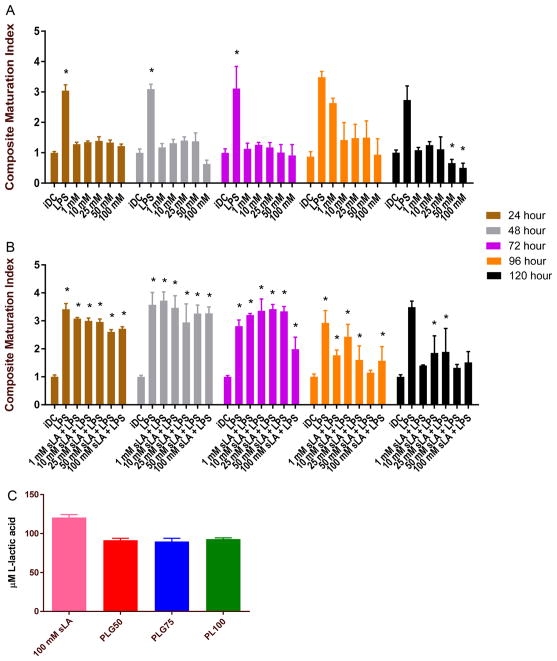Figure 8.
Culturing DCs with sodium-L-lactate at high concentrations produces similar immunosuppressive effects to those observed when DCs are cocultured with low molecular weight PLGA/PLA MPs. (A) DCs were cultured with sLA at concentrations ranging from 1 to 100 mM. The composite maturation indexes (unweighted average of the expression of CD80, CD86, and MHCII) of DCs at each time point are shown, normalized to the iDC population. At higher concentrations of lactic acid, specifically 100 mM, the composite maturation index for DCs is significantly lower than that of the immature DC population, particularly at later time points. The * symbol represents a pairwise comparison to the immature DC population (p ≤ 0.05). (B) DCs were cultured with sodium-L-lactate at concentrations ranging from 1 to 100 mM at the designated time points and then challenged with LPS for 24 h. Similar to PLGA/PLA MPs, sLA provides resistance to maturation at higher concentrations. The * symbol represents a pairwise comparison to the iDC population (p ≤ 0.05) (C) The intracellular L-lactic acid concentration was measured after 120 h of incubation with 100 mM lactic acid in the culture media. Interestingly, the concentration of intracellular L-lactic acid is similar to the concentration that accumulates after incubation with PLA and PLGA MPs after 120 h. Data shown represent the mean ± standard error (n ≥ 3 biological replicates).

